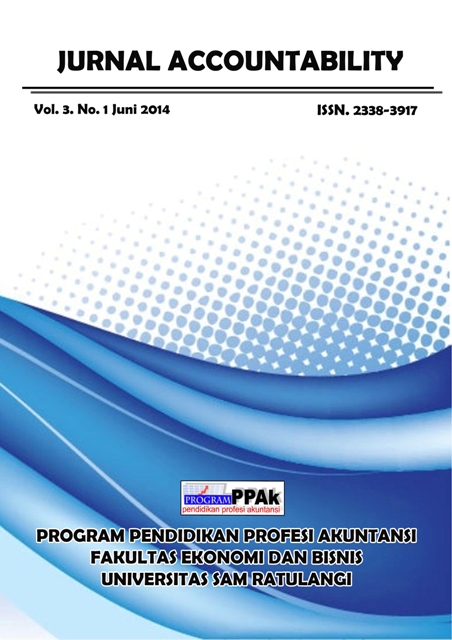ANALISIS PERBANDINGAN KINERJA PADA BANK NASIONAL DAN BANK ASING DENGAN MENGGUNAKAN ANALISIS RASIO KEUANGAN
Abstract
ABSTRAK
Â
Penilaian terhadap kinerja suatu bank tertentu dapat dilakukan dengan melakukan analisis terhadap laporan keuangannya. Laporan keuangan bank berupa neraca memberikan informasi kepada pihak di luar bank. Informasi yang diberikan mengenai gambaran posisi keuangannya, yang lebih jauh dapat digunakan pihak eksternal untuk menilai besarnya resiko yang ada pada suatu bank. Dilihat dari segi kepemilikannya, pengelompokkan bank dapat dibedakan atas 3 kelompok yaitu bank nasional, bank asing dan bank campuran. Ketiga kelompok bank ini dalam kenyataannya bersaing ketat untuk menunjukkan good performance di mata publik. Penelitian ini bertujuan untuk menganalis kinerja keuangan bank nasional dan bank asing periode 2004 – 2013 dengan menggunakan proksi keuangan (CAMEL) yang terdiri atas: Capital, Asset Quality, Management, Earnings, Liquidity. Populasi dalam penelitian ini adalah seluruh bank (bank asing dan bank nasional) yang tercatat dalam Bursa Efek Indonesia tahun 2004-2013 yang berjumlah 42 bank, dengan menggunakan purposive sampling jumlah sampel yang memenuhi kriteria adalah sebanyak 10 bank (dengan perincian 5 bank nasional dan 5 bank asing). Metode analisis yang digunakan adalah uji beda rata-rata (t-test). Dari hasil penelitian diperoleh penggunaan proksi CAMEL dalam melakukan analisis perbandingan kinerja memberikan bukti bahwa kinerja bank asing lebih baik dari bank nasional.
Kata Kunci : kinerja keuangan, bank nasional, bank asing, rasio CAMEL
Â
Â
ABSTRACT
Â
Bank performance appraisal is based on bank financial report itself. The financial report can be form balance report which give information about the financial position to the outside of bank that can be used of eksternal to assess the level of risk exist in a bank. Based on ownership consist of national bank, mixture bank and foreign bank. These banks has tight compete to show a good performance to the public. This research aimed to analyze the financial performance difference of national bank and foreign bank at the period of 2004 to 2013 with the proxy finance ratio (CAMEL ratio) consist of: Capital, Asset Quality, Management, Earnings, and Liquidity. The population in this research consist of national bank and foreign bank listed on the Indonesia Stock Exchange at the period of 2004 to 2013 which amount 42 banks. Based on purposive sampling techniques, the number of samples that meet the criteria are as many as 10 banks (5 national banks and 5 foreign banks). Analysis technique that use in this research is t-test. As the result the usage of proxy CAMEL ratio to analyze comparison bank performance give evidence that foreign bank performance is better than national bank performance.
Keywords : financial performance, national bank, foreign bank, CAMEL ratio.
Downloads
Published
Issue
Section
License
The articles published in Jurnal Accountability are licensed under Creative Commons Attribution-NonCommercial 4.0 International with authors as copyright holders.
Â

This work is licensed under a Creative Commons Attribution-NonCommercial 4.0 International License.
Â
- Share — copy and redistribute the material in any medium or format.
- Adapt — remix, transform, and build upon the material.
- The licensor cannot revoke these freedoms as long as you follow the license terms.
- Attribution — You must give appropriate credit, provide a link to the license, and indicate if changes were made. You may do so in any reasonable manner, but not in any way that suggests the licensor endorses you or your use.
- NonCommercial — You may not use the material for commercial purposes.
- No additional restrictions — You may not apply legal terms or technological measures that legally restrict others from doing anything the license permits.
- You do not have to comply with the license for elements of the material in the public domain or where your use is permitted by an applicable exception or limitation.
- No warranties are given. The license may not give you all of the permissions necessary for your intended use. For example, other rights such as publicity, privacy, or moral rights may limit how you use the material.


